Related Research Articles

Meniscoessus is a genus of extinct multituberculates from the Upper Cretaceous Period that lived in North America.

Timeline of paleontology

The South Polar region of the Cretaceous comprised the continent of East Gondwana–modern day Australia, Zealandia, and Antarctica–a product of the break-up of Gondwana in the Cretaceous Period. The southern region, during this time, was much warmer than it is today, ranging from perhaps 4–8 °C (39–46 °F) in the latest Cretaceous Maastrichtian in what is now southeastern Australia. This prevented permanent ice sheets from developing and fostered polar forests, which were largely dominated by conifers, cycads, and ferns, and relied on a temperate climate and heavy rainfall. Major fossil-bearing geological formations that record this area are: the Santa Marta and Sobral Formations of Seymour Island off the Antarctic Peninsula; the Snow Hill Island, Lopez de Bertodano, and the Hidden Lake Formations on James Ross Island also off the Antarctic Peninsula; and the Eumeralla and Wonthaggi Formations in Australia.

Inverloch is a seaside town in Victoria, Australia. It is 143 kilometres (89 mi) south east of Melbourne via the South Gippsland Highway on the Bass Highway in the Bass Coast Shire of Gippsland. Known originally for the calm waters of Anderson Inlet, it is now also known for the discovery of Australia's first dinosaur bone.

Qantassaurus is a genus of basal two-legged, plant-eating elasmarian ornithischian dinosaur that lived in Australia about 125-112 million years ago, when the continent was still partly south of the Antarctic Circle. It was described by Patricia Vickers-Rich and her husband Tom Rich in 1999 after a find near Inverloch, and named after Qantas, the Australian airline.

Ceratopsia or Ceratopia is a group of herbivorous, beaked dinosaurs that thrived in what are now North America, Europe, and Asia, during the Cretaceous Period, although ancestral forms lived earlier, in the Jurassic. The earliest known ceratopsian, Yinlong downsi, lived between 161.2 and 155.7 million years ago. The last ceratopsian species, Triceratops prorsus, became extinct during the Cretaceous–Paleogene extinction event, 66 million years ago.

The Dinosaur Cove in Victoria, Australia is a fossil-bearing site in the south-east of the continent where the Otway Ranges meet the sea to the west of Cape Otway, adjacent to Great Otway National Park (map). The inaccessible ocean-front cliffs include fossil-bearing strata of the Eumeralla Formation that date back to about 106 million years ago and has provided discoveries important in the research of the natural history of dinosaurs in Australia and the Southern Hemisphere as a whole.
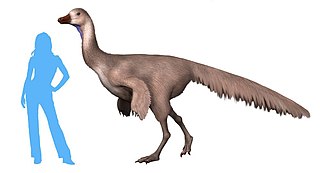
Arkansaurus is an extinct genus of ornithomimosaurian theropod dinosaur. It lived during the Albian and Aptian stages of the Early Cretaceous. The type and only species is Arkansaurus fridayi.
Serendipaceratops is a genus of herbivorous ornithischian dinosaur, possibly an ankylosaur, from the early Cretaceous Period of Australia. The type species, S. arthurcclarkei, was named in 2003.
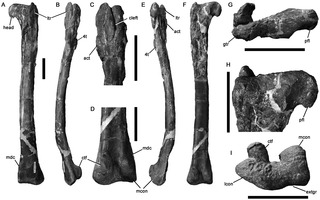
Timimus is a genus of small coelurosaurian theropod dinosaur from the Early Cretaceous of Australia. It was originally identified as an ornithomimosaur, but now it is thought to be a different kind of theropod, possibly a tyrannosauroid.

Astrodon is a genus of large herbivorous sauropod dinosaur, measuring 20 m (66 ft) in length, 9 m (30 ft) in height and 20 metric tons in body mass. It lived in what is now the eastern United States during the Early Cretaceous period, and fossils have been found in the Arundel Formation, which has been dated through palynomorphs to the Albian about 112 to 110 million years ago.
The natural history of Australia has been shaped by the geological evolution of the Australian continent from Gondwana and the changes in global climate over geological time. The building of the Australian continent and its association with other land masses, as well as climate changes over geological time, have created the unique flora and fauna present in Australia today.

Cape Paterson is a cape and seaside village located near the town of Wonthaggi, 132 kilometres (82 mi) south-east of Melbourne via the South Gippsland and Bass Highways, in the Bass Coast Shire of Gippsland, Victoria, Australia. Known originally for the discovery of coal by William Hovell in 1826, it is now extremely popular for its beaches and rockpool and at the 2011 census, it had a population of 718.
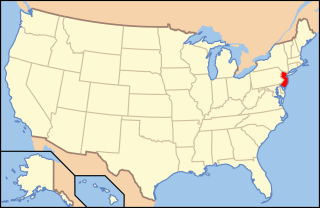
Paleontology in New Jersey refers to paleontological research in the U.S. state of New Jersey. The state is especially rich in marine deposits.
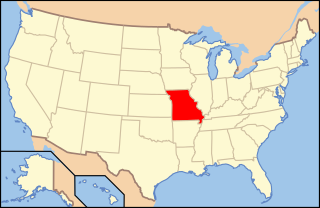
Paleontology in Missouri refers to paleontological research occurring within or conducted by people from the U.S. state of Missouri. The geologic column of Missouri spans all of geologic history from the Precambrian to present with the exception of the Permian, Triassic, and Jurassic. Brachiopods are probably the most common fossils in Missouri.
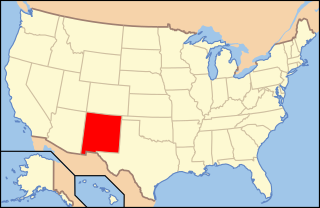
Paleontology in New Mexico refers to paleontological research occurring within or conducted by people from the U.S. state of New Mexico. The fossil record of New Mexico is exceptionally complete and spans almost the entire stratigraphic column. More than 3,300 different kinds of fossil organisms have been found in the state. Of these more than 700 of these were new to science and more than 100 of those were type species for new genera. During the early Paleozoic, southern and western New Mexico were submerged by a warm shallow sea that would come to be home to creatures including brachiopods, bryozoans, cartilaginous fishes, corals, graptolites, nautiloids, placoderms, and trilobites. During the Ordovician the state was home to algal reefs up to 300 feet high. During the Carboniferous, a richly vegetated island chain emerged from the local sea. Coral reefs formed in the state's seas while terrestrial regions of the state dried and were home to sand dunes. Local wildlife included Edaphosaurus, Ophiacodon, and Sphenacodon.

The Bunurong Marine and Coastal Park collectively are a marine park and a coastal park located along the reef and coast of Harmers Haven, Cape Paterson and Inverloch in the South Gippsland region of Victoria, Australia. Collectively, the parks are located approximately 140 kilometres (87 mi) southeast of Melbourne, between Coal Point in the west to Wreck Creek in the east, and are used for walking, picnicking, boating, education and research.

Galleonosaurus is a genus of basal ornithopod dinosaur from the Wonthaggi Formation of the Gippsland region of Victoria, Australia. The type and only species is Galleonosaurus dorisae.
Eiectus is a potentially valid genus of extinct short-necked pliosaur that lived in the Early Cretaceous period. Fossil material has been recovered from the Wallumbilla Formation (Aptian) of Queensland was initially classified under the related genus Kronosaurus until 2021.
References
- ↑ "Dinosaur Dreaming – the Inverloch Fossil site: Museum Victoria". Archived from the original on 15 January 2017. Retrieved 13 September 2016.